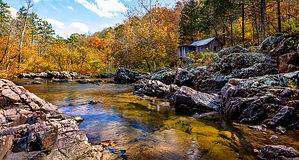With its humid and subtropical climate, South Carolina has many perfect areas for growing palm trees. Additionally, it has hot summers and mild winters that provide plenty of sun and warm weather for different types of palm trees to thrive. Also, the average January temperatures are between 50 – 59°F, and for July, they are between 89 – 92°F. During winter, South Carolina receives about one inch of snow. However, in summer, it gets thunderstorms and tropical cyclones. This state has about 64 days of thunderstorms per year, and tornadoes are an ever-present threat. South Carolina’s USDA hardiness zones are between 7a and 9a. Therefore, many cold-hardy palms can grow in zones 8 and 9. Also, a few palms can grow in zone 7 but will require cold protection and acclimation.
Facts About Palms That Grow in South Carolina
- The Sabal Palmetto is South Carolina’s state tree. It is also known as the Cabbage Palmetto. It was named the state tree in 1939.
- This palm can withstand rough weather, such as hurricanes, which makes it ideal for South Carolina’s climate. Also, the leaves have been used for roofing and the trunk for pilings.
- The Sabal Palmetto native to South Carolina can grow up to 65 feet. Its fruit is a black drupe that provides food for wildlife.
- Unfortunately, many palms in South Carolina are threatened by the “Texas Phoenix Palm Decline.”
- Another palm tree that thrives in this state is the Windmill Palm. This palm can survive occasional snow and cold weather.
- The city of Charleston in South Carolina has many palm trees lining its streets and is sometimes called the “City of Palms.”
Many types of palm trees grow very well in South Carolina. We will look at a few of the most popular ones.
1. Needle Palm (Rhapidophyllum Hystrix)

The Needle Palm will grow in all areas in South Carolina without needing cold protection once they are established.
©Sanyawadee/Shutterstock.com
This is a type of palm tree native to South Carolina. The Needle Palm grows as a dense shrub and does not produce a noticeable trunk. However, it is an adaptable palm known to be the world’s hardiest. It can tolerate low temperatures but is officially listed as cold hardy for USDA Zones 8a to 10b, which include temperatures that range from 10 to 35 F. These palm trees can tolerate colder temperatures only once they mature enough. Therefore, it is recommended to provide some cold protection in the first year or two after they are planted. Also, the Needle Palm will grow in all areas in South Carolina without needing cold protection once they are established.
2. Jelly Palm Tree (Butia capitata)

Planting the Butia capitata in zones 8a to 9a and an area with soil with good drainage and full sun is advisable.
This type of palm tree is native to Argentina, Uruguay, and Brazil. However, it is cultivated in the Southeast, including South Carolina. The Jelly Palm is the most cold, hardy palm tree with feather-shaped leaves. Also, it is a medium-sized palm with elegant arching green to blue-green fronds, and its trunk is short and grayish. In addition, the Jelly Palm can withstand temperatures down to 15F. Any lower temperatures could cause leaf damage. Planting this palm in zones 8a to 9a and an area with soil with good drainage and full sun is advisable.
3. Palmetto Palm (Sabal Palmetto)
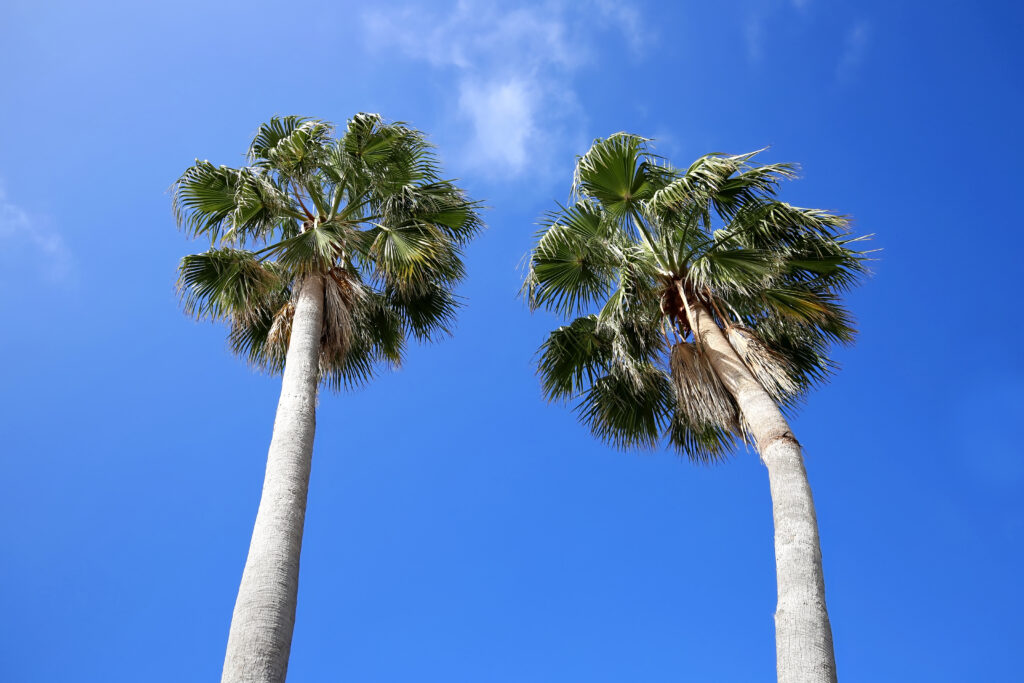
The Palmetto Palm, when mature, has a massive trunk with old leaf bases that form a crisscross pattern. Also, it has blue-green fan-shaped leaves that provide lovely shade in hot weather.
©Jillian Cain Photography/Shutterstock.com
One of the most common palms in the United States, the Palmetto Palm is also the state tree of Florida and South Carolina. Sometimes also known as the Cabbage Palm, these can grow wildly all along the coast of South Carolina and near the state capitol, Columbia. The Palmetto Palm, when mature, has a massive trunk with old leaf bases that form a crisscross pattern. Also, it has blue-green fan-shaped leaves that provide lovely shade in hot weather. This palm is slow growing and can tolerate cold temperatures down to 10F and drought when it is established. The Palmetto Palm is recommended for zones 8b to 9a.
4. California Fan Palm (Washingtonia filifera)

The California Fan Palm is a type of palm tree that originates in Arizona and California. This palm is slow-growing but is an attractive species, especially when it is mature.
©iStock.com/Sundry Photography
The California Fan Palm is a type of palm tree that originates in Arizona and California. This palm is slow-growing but is an attractive species, especially when it is mature. Also, it has yellow fan-shaped leaves and a thick trunk with old leaf bases. Also, it is drought tolerant and favors dry climates. Therefore, it will do well in zones 8a to 9a and can tolerate cold down to 10F.
5. Sago Palm (Cycas Revoluta)
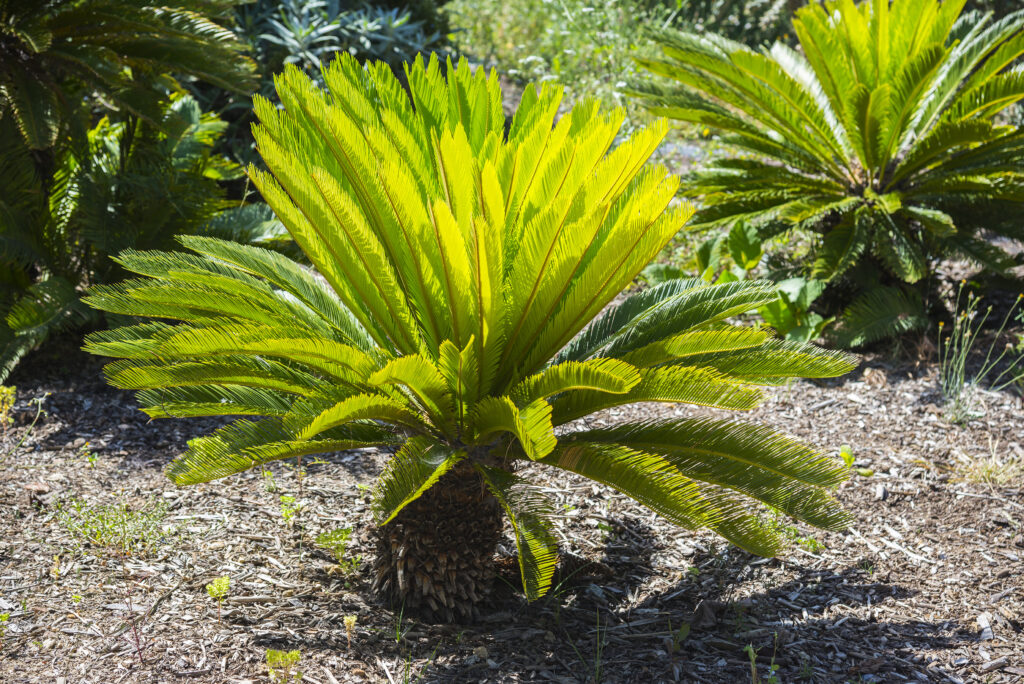
This is not a palm but a cycad. However, it is one of the oldest plants in the world. The
Sago Palm
originates in Japan and is an evergreen tree with a black trunk and stiff palm-like fonds.
©iStock.com/kornyeyeva
This is not a palm but a cycad. However, it is one of the oldest plants in the world. The Sago Palm originates in Japan and is an evergreen tree with a black trunk and stiff palm-like fonds. Also, it will do well with full sun but grows well in shade. However, it does favor well-drained sandy soil that is alkaline or acidic. In addition, the Sago Palm can tolerate droughts and will do well in zone 9a.
6. Mediterranean or European Fan Palm (Chamaerops humilis)
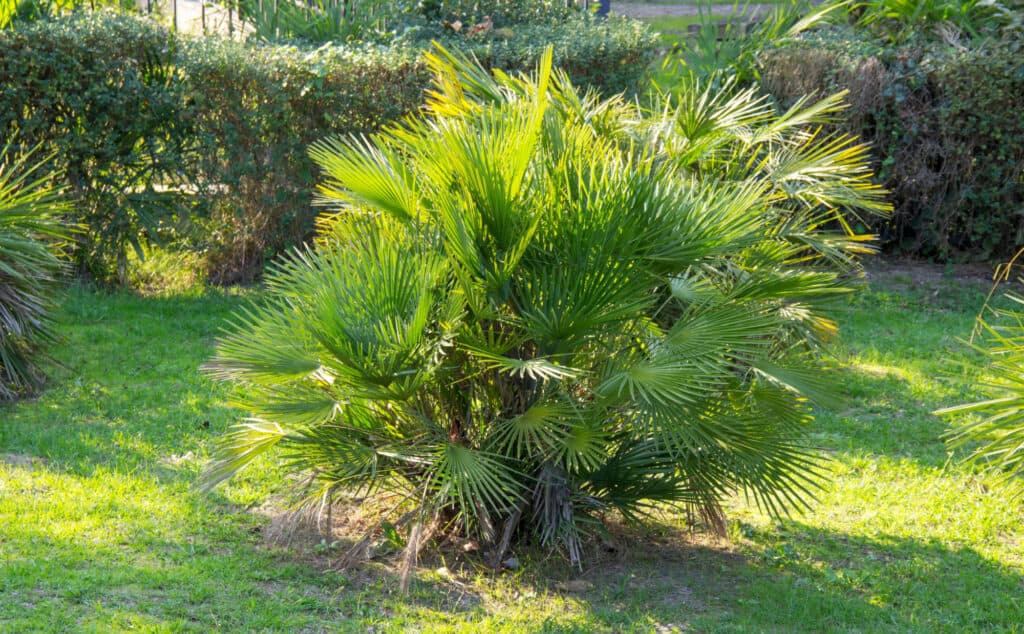
The Mediterranean Palm is tough, can withstand temperatures down to 5F, and is drought resistant. They will grow well in South Carolina in zones 8a to 9a.
©ToKa74/Shutterstock.com
This is a hardy fan palm from the Mediterranean region of Europe. Here, it grows in the mountains on rocky, poor soil. Also, it is a slow-growing palm with stiff leaves and layers of dead leaves underneath the crown. The ones growing in South Carolina don’t usually exceed five feet. The Mediterranean Palm is tough, can withstand temperatures down to 5F, and is drought resistant. They will grow well in South Carolina in zones 8a to 9a.
7. Saw Palmetto Palm (Serenoa Repens)
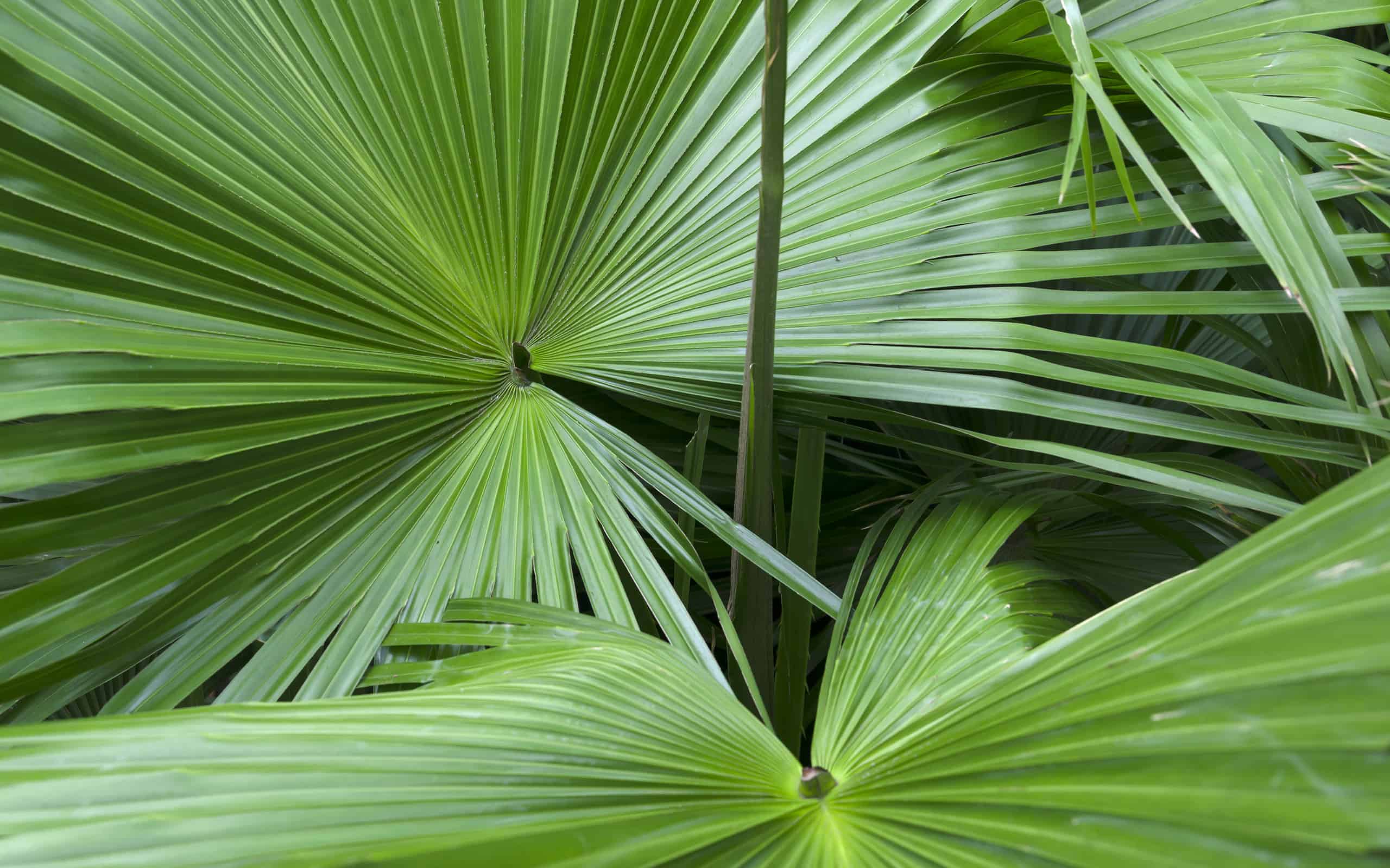
Saw Palmetto Palm (Serenoa repens) close-up
©lizfernandezg/iStock via Getty Images
Native to the Southeast coastal areas, including South Carolina, the Saw Palmetto Palm is a dense and weedy plant that forms a ground cover in dry forest areas. This palm has fan-shaped leaves and a trunk that creeps along the ground or through the soil. The Saw Palmetto palm is not easy to transplant. Therefore, it would be advisable to get a container-grown one. Also, it is a slow-growing palm but can tolerate temperatures as low as 10F. This palm will grow well in all areas in South Carolina. However, if growing in zone 7b, it may need cold protection, especially while it is still a young plant.
8. Dwarf Palmetto Palm (Sabal Minor)
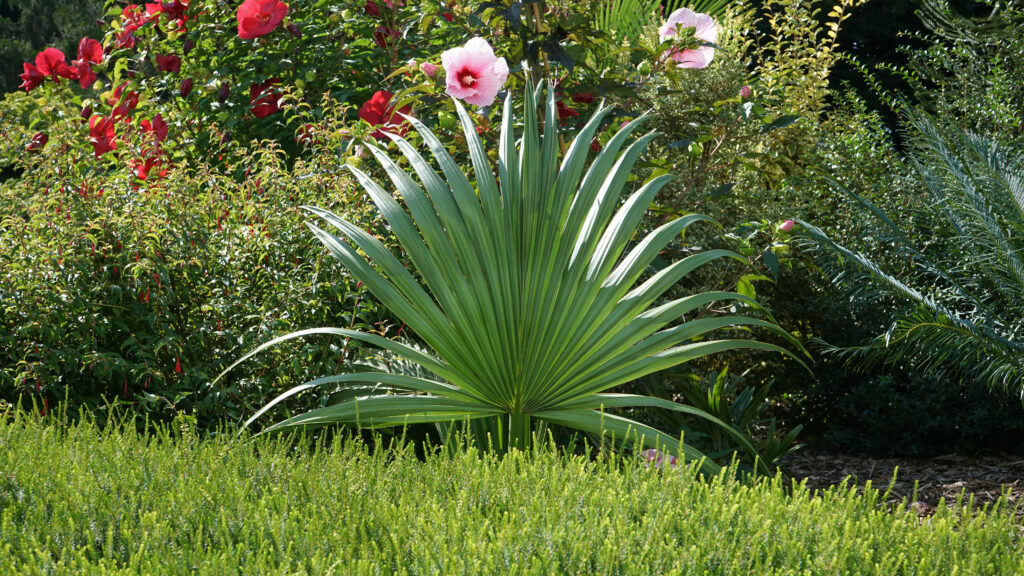
This palm has fan-shaped green to bluish-green leaves with a pronounced split “V” in the center. In addition, it can tolerate temperatures as low as -5F.
©Dusan UHRIN/Shutterstock.com
The Dwarf Palmetto Palm is another type of palm tree indigenous to the Southeastern United States, including South Carolina. It is sometimes confused with the Saw Palmetto. However, the Dwarf Palmetto has a short trunk that is short or under the ground, and it is a climbing plant. Also, it does not have spines on the sides of its stems and doesn’t form invasive colonies. This palm has fan-shaped green to bluish-green leaves with a pronounced split “V” in the center. In addition, it can tolerate temperatures as low as -5F. It will grow well in all areas in South Carolina. However, it does not transplant well, so it is advisable to plant it from a container.
9. Windmill Palm (Trachycarpus fortune)
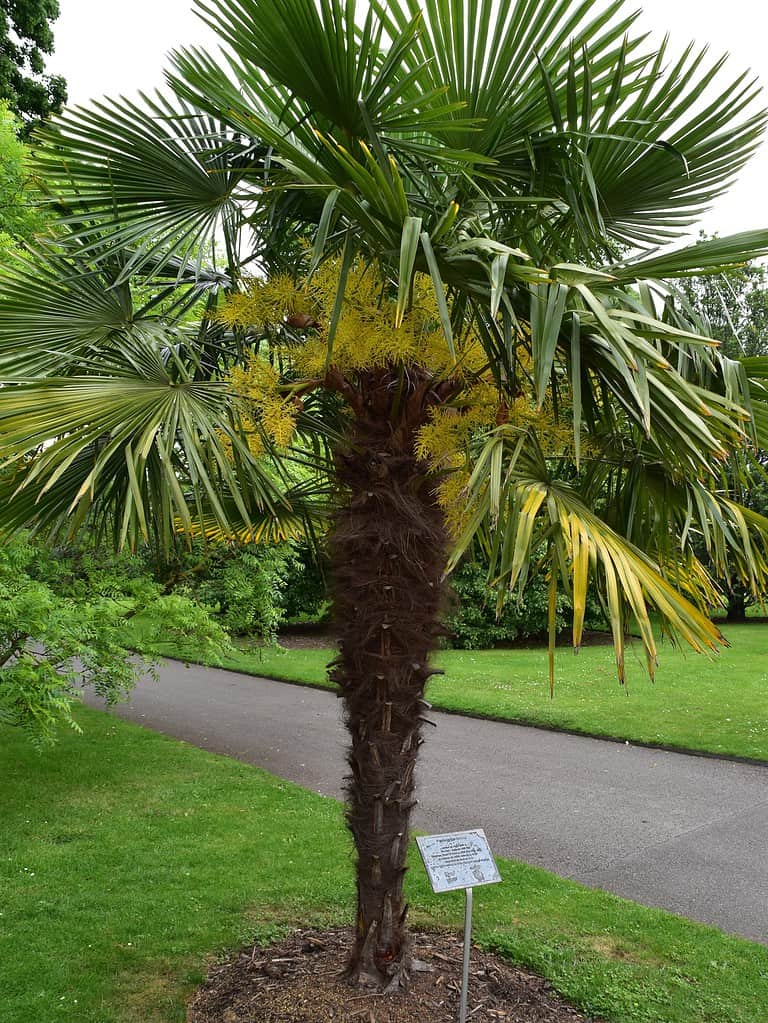
This palm favors warm temperatures and will grow well in zones 7b to 9a. Also, it will not thrive in hot tropical climates and needs light to medium shade.
The Windmill Palm comes from China and has dark green fan-shaped leaves, a thick trunk covered with brown fibers, and old leaf bases. This palm favors warm temperatures and will grow well in zones 7b to 9a. Also, it will not thrive in hot tropical climates and needs light to medium shade.
10. Mexican Fan Palm (Washingtonia Robusta)

This is one of the types of palm trees that is native to Mexico. When this palm is young, it can often be confused with the Californian Fan Palm.
©iStock.com/SlavkoSereda
This is one of the types of palm trees that is native to Mexico. When this palm is young, it can often be confused with the Californian Fan Palm. Like the Californian Fan Palm, it likes well-drained, alkaline, or acidic soil. Also, it is a fast-growing palm that can tolerate temperatures as low as 10F. The Mexican Fan Palm will grow well in zones 8b to 9a.
11. Chinese Fan Palm (Livistonia Chinensis)
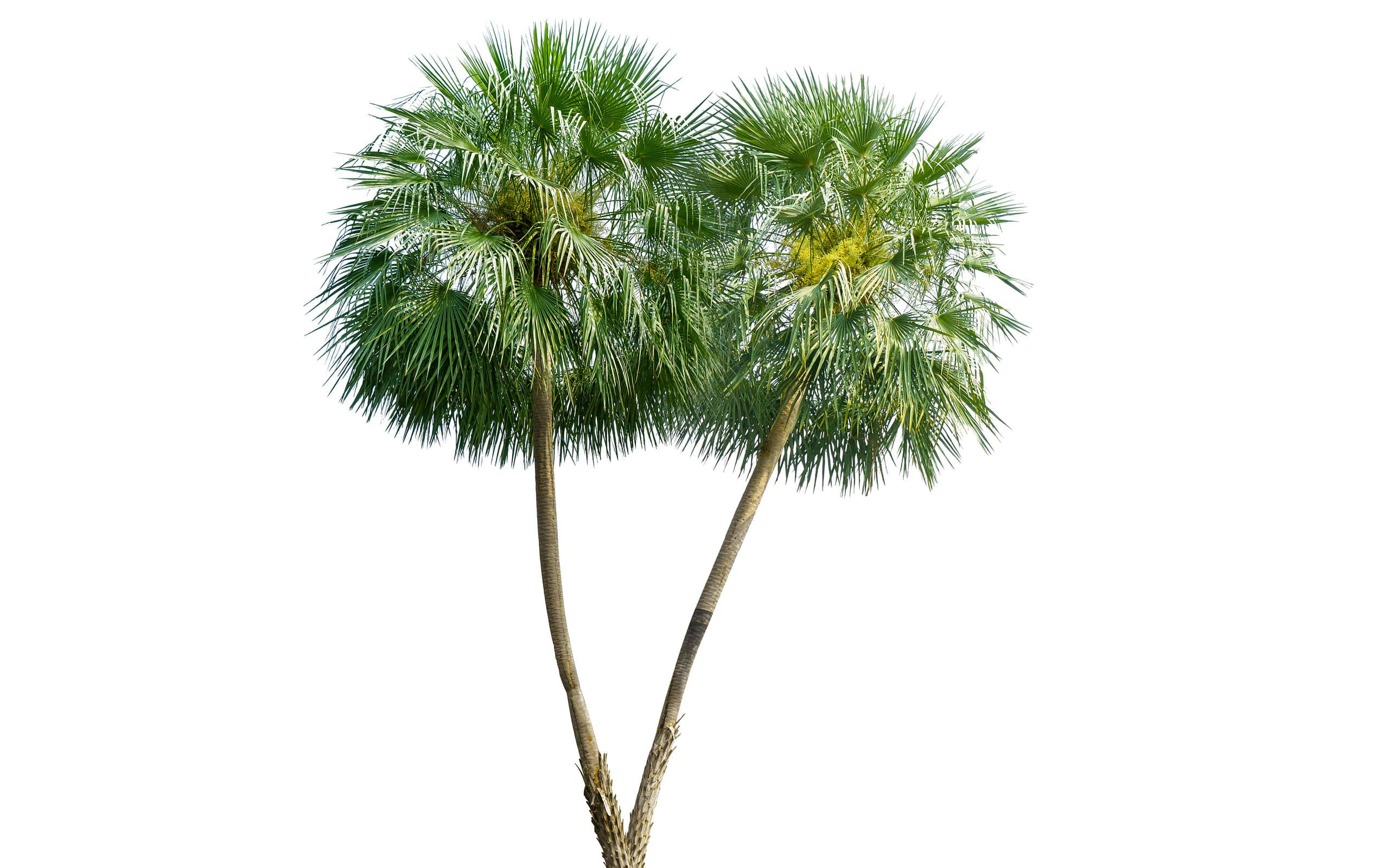
This palm tree is sometimes called a Chinese Fountain Palm or Fountain Palm and is part of the Arecaceae family. It originates in southern Japan and China.
©Suthin Saenontad/iStock via Getty Images
This palm tree is sometimes called a Chinese Fountain Palm or Fountain Palm and is part of the Arecaceae family. It originates in southern Japan and China. Also, the Chinese Fan Plam has a thick grey-brown trunk with old leaf scars. It is evergreen and has dense, fan-shaped bluish-green to olive-green leaves. These leaves create a fountain-like effect. In addition, it produces yellow-cream flowers, followed by small oval fruits that are blue-gray when ripe. It is a slow-growing palm that can be grown indoors or outdoors.
12. Queen Palm (Syagrus Romanzoffiana)
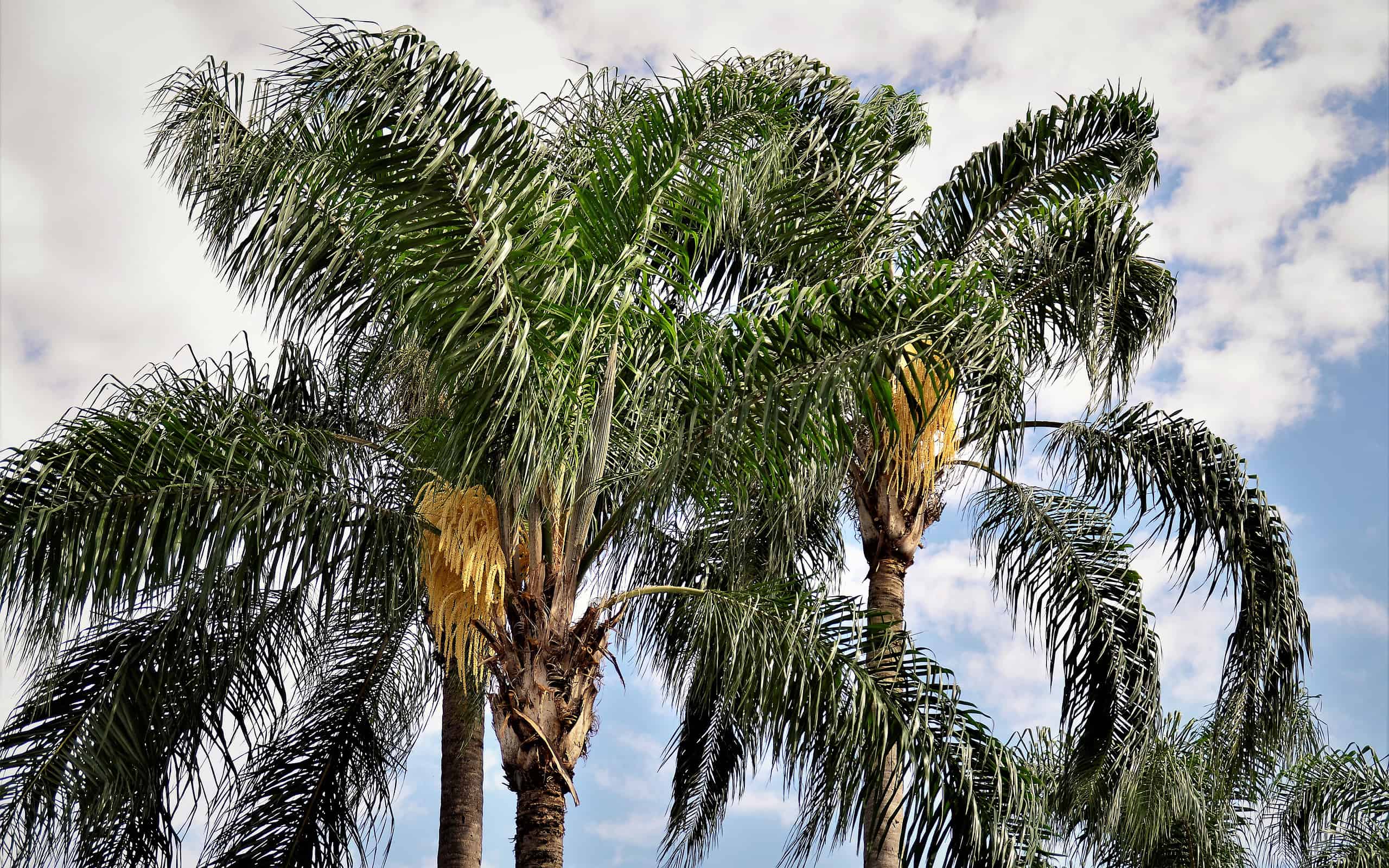
In the summer months, the queen palm will produce beautiful cream flowers. After that, it will create green fruit called “dates” that will turn orange when mature.
©NancyAyumi/iStock via Getty Images
The Queen Palm is also sometimes called Cocos Plumosa and Jeriva Syagrus romanzoffiana and is native to the South American woodlands of Argentina and Brazil. It has a smooth trunk ringed with old leaf scars and dark green feathery leaves. In addition, in the summer months, it will produce beautiful cream flowers. After that, it will create green fruit called “dates” that will turn orange when mature. Unfortunately, these fruits are not edible. The Queen Palm is a fast-growing palm that grows about six feet yearly.
Conclusion
So, as you can see, there are many types of palm trees you are likely to see when visiting South Carolina. There are very popular species like the Sabal Palmetto and queen palm. However, it also has rarer species like the windmill palm or Chinese fan palm. Therefore, the next time you visit the Palmetto State, see how many types of palms you can recognize.
Thank you for reading! Have some feedback for us? Contact the AZ Animals editorial team.







